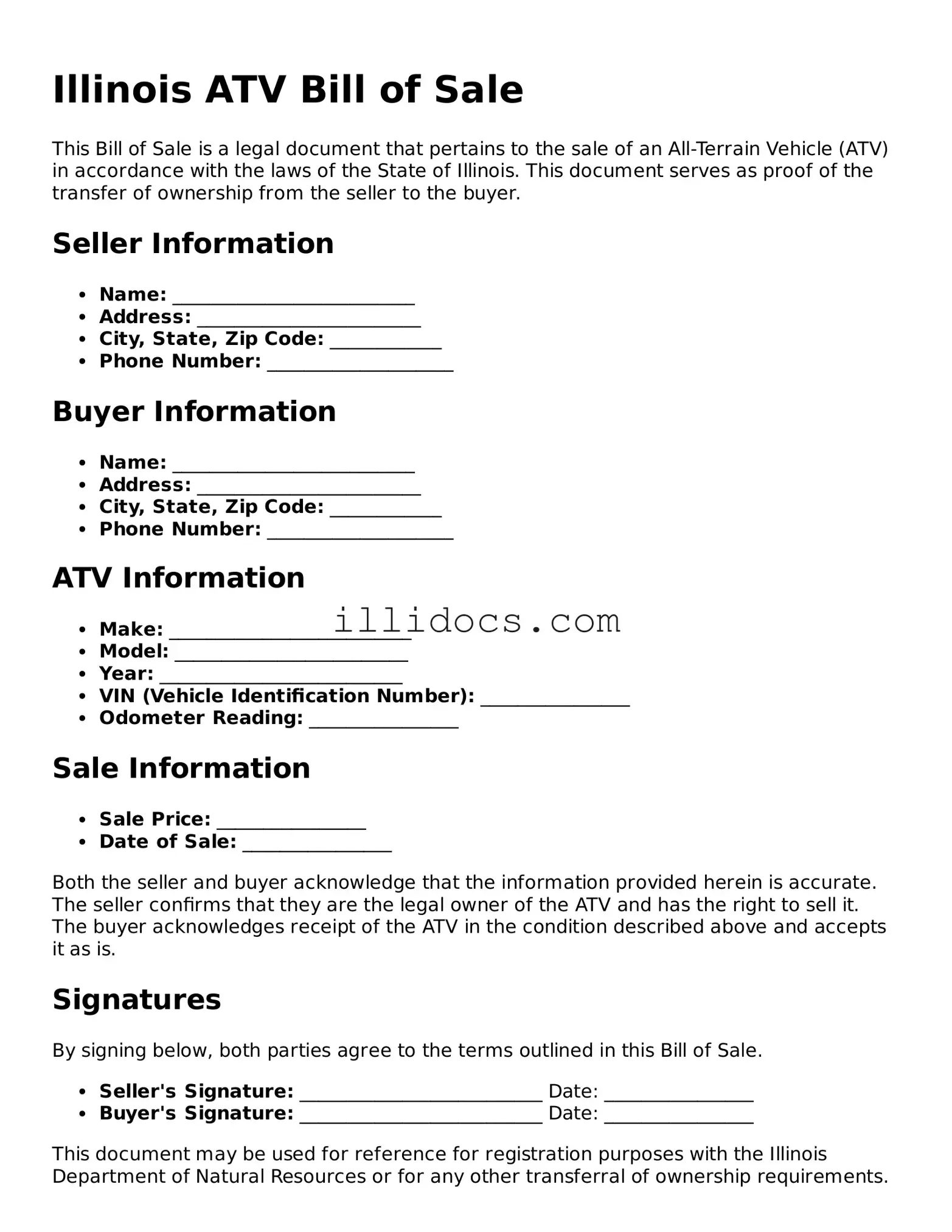What is an Illinois ATV Bill of Sale?
An Illinois ATV Bill of Sale is a legal document that records the sale or transfer of an all-terrain vehicle (ATV) between a seller and a buyer. This document serves as proof of the transaction and includes important details about the ATV and the parties involved.
Why do I need an ATV Bill of Sale?
The Bill of Sale is important for several reasons. It provides evidence of ownership, protects both the buyer and seller in case of disputes, and is often required for registration with the Illinois Department of Natural Resources. Having this document can help ensure a smooth transaction.
What information is included in the ATV Bill of Sale?
The form typically includes the names and addresses of the buyer and seller, a description of the ATV (including make, model, year, and Vehicle Identification Number), the sale price, and the date of the transaction. Both parties should sign the document to make it valid.
Is a Bill of Sale required to register an ATV in Illinois?
Yes, a Bill of Sale is generally required for registering an ATV in Illinois. It serves as proof that the buyer has purchased the vehicle and is the new owner. The Illinois Department of Natural Resources may ask for this document during the registration process.
Can I create my own ATV Bill of Sale?
Yes, you can create your own ATV Bill of Sale as long as it includes all the necessary information. However, using a standard form can help ensure that you don’t miss any important details. Many online resources provide templates that you can fill out.
Do I need to have the Bill of Sale notarized?
Notarization is not typically required for an ATV Bill of Sale in Illinois. However, having the document notarized can add an extra layer of security and may be beneficial in case of future disputes.
What if the ATV has a lien on it?
If the ATV has a lien, the seller must disclose this information to the buyer. The lienholder must be paid off before the sale can be completed. The Bill of Sale should indicate that the lien has been cleared, or arrangements must be made to handle the lien during the sale.
How should I store the Bill of Sale after the transaction?
After the transaction, both the buyer and seller should keep a copy of the Bill of Sale for their records. It is advisable to store it in a safe place, such as a file cabinet or a digital format, to ensure it can be accessed if needed in the future.
What should I do if I lose the Bill of Sale?
If you lose the Bill of Sale, you can create a new one to document the sale again. Both parties should sign the new document. If possible, include a note stating that it replaces the original Bill of Sale to avoid confusion.
